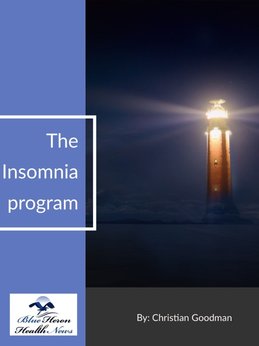
The Insomnia Program™ By Christian Goodman This program has been created by Christian Goodman, a natural health expert and sufferer of insomnia. He has used an audio program to let your fall sleep with the help of a bit of a hypnotic effect on your body.
How is insomnia diagnosed?
Diagnosing Insomnia
Diagnosing insomnia involves a comprehensive evaluation by a healthcare provider to identify the underlying causes and determine the best course of treatment. The diagnostic process typically includes a detailed medical history, physical examination, and various specialized assessments. Here’s a step-by-step outline of how insomnia is diagnosed:
1. Medical History and Sleep Patterns
Patient Interview: The first step in diagnosing insomnia is a thorough interview. The healthcare provider will ask about the patient’s sleep patterns, including:
- Difficulty falling asleep, staying asleep, or waking up too early.
- Duration of the sleep problem (whether it is a short-term or chronic issue).
- Frequency of sleep disturbances (how often insomnia occurs).
Sleep Diary: Patients may be asked to keep a sleep diary for one to two weeks. This diary should include:
- Bedtime and wake-up time.
- Number and duration of awakenings during the night.
- Total sleep time.
- Daytime activities, naps, and consumption of caffeine or alcohol.
Questionnaires: Standardized questionnaires, such as the Insomnia Severity Index (ISI), Epworth Sleepiness Scale, or Pittsburgh Sleep Quality Index (PSQI), help assess the severity of insomnia and its impact on daily life.
2. Medical and Psychiatric History
Review of Medical Conditions: The healthcare provider will review the patient’s medical history to identify any conditions that might contribute to insomnia, such as:
- Chronic pain.
- Respiratory conditions (e.g., asthma, sleep apnea).
- Neurological disorders (e.g., Parkinson’s disease, Alzheimer’s disease).
- Gastrointestinal issues (e.g., GERD).
Review of Psychiatric History: Mental health conditions, such as anxiety, depression, and bipolar disorder, are commonly associated with insomnia. A review of the patient’s psychiatric history helps identify these contributing factors.
Medication Review: A review of all medications, including over-the-counter drugs and supplements, is essential, as some medications can interfere with sleep.
3. Physical Examination
A physical examination helps rule out other medical conditions that could be causing insomnia. This may include:
- Checking vital signs (blood pressure, heart rate).
- Examining the respiratory system.
- Assessing neurological function.
4. Sleep Study (Polysomnography)
If the initial assessment suggests a sleep disorder other than insomnia, such as sleep apnea or periodic limb movement disorder, a sleep study may be recommended. Polysomnography is an overnight test conducted in a sleep lab that records:
- Brain waves.
- Oxygen levels in the blood.
- Heart rate.
- Breathing.
- Eye and leg movements.
5. Actigraphy
Actigraphy involves wearing a small, wrist-worn device that tracks movement and can help determine sleep patterns over a period of days to weeks. It provides an objective measure of sleep-wake cycles and can be particularly useful in assessing circadian rhythm disorders.
6. Psychological Evaluation
If a psychological component is suspected, a referral to a mental health professional may be necessary. A psychological evaluation can help identify underlying conditions such as:
- Anxiety disorders.
- Depression.
- Stress-related issues.
7. Assessment of Lifestyle and Environmental Factors
Lifestyle Assessment: The healthcare provider will inquire about lifestyle factors that can impact sleep, including:
- Caffeine and alcohol consumption.
- Tobacco use.
- Physical activity levels.
- Work schedule (including shift work).
Environmental Assessment: Evaluating the patient’s sleep environment is also crucial. Factors such as noise, light, room temperature, and the comfort of the bed can all affect sleep quality.
Differential Diagnosis
Insomnia must be differentiated from other sleep disorders and conditions that can mimic its symptoms. These include:
- Sleep apnea: Characterized by pauses in breathing during sleep.
- Restless legs syndrome: Causes uncomfortable sensations in the legs and an urge to move them.
- Narcolepsy: Involves excessive daytime sleepiness and sudden episodes of sleep.
- Circadian rhythm sleep disorders: Disruptions in the body’s internal clock, affecting the timing of sleep.
Conclusion
Diagnosing insomnia is a multi-faceted process that involves gathering detailed information about sleep patterns, medical history, and lifestyle factors. Through patient interviews, sleep diaries, questionnaires, physical examinations, and, if necessary, specialized tests like polysomnography and actigraphy, healthcare providers can identify the underlying causes of insomnia and develop an effective treatment plan. Early and accurate diagnosis is essential for managing insomnia and improving overall sleep health.

The Insomnia Program™ By Christian Goodman This program has been created by Christian Goodman, a natural health expert and sufferer of insomnia. He has used an audio program to let your fall sleep with the help of a bit of a hypnotic effect on your body.